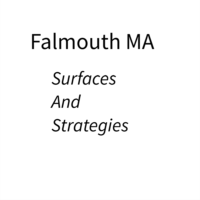Sandford Mill is a Water Treatment Plant on the edge of Chelmsford that was opened in the 1950s to provide water to the expanding market town. The facility was decommissioned in the 1980s the site is now opened by Chelmsford Museum as their out of city Science and Education unit. The Filter House is the largest building which has not been repurposed as part of the new role for the site.
Intent
After a meeting with Chelmsford Museum they agreed to give me access to the Filter House for the purposes of creating a photo essay that describes the current state of the building which has experienced a level of industrial decay following the decommissioning of the site as an active facility. It was agreed that I would provide a copy of a set of the images for the museum for their archive in trade for access to the facility.
Equipment Used
The site is currently without power and because of vandalism a number of the windows have been boarded up reducing the level of natural light. A number of the spaces are large and contain reflective surfaces.
I decided for the first visit to use following equipment: DSLR with a number of zoom lenses 16-35 f2.8 and 24-70 f2.8. The lack of natural light meant that additional light would be used to supplement natural light. I decided to use 3 Quadra 400 Ws packs plus soft boxes to complement the soft diffuse light from the large windows.
Methodology
Given the size of the building and time within the facility would be limited to a number of visits I decided to adopt a methodology where I would shoot wide establishing images to capture the scale of the place and record specific details within the space. Those details would consistent of following elements:
- Evidence of human activity in the building from when it was operational
- Details of the machinery used to operate the facility showing industrial decay
Strong Image

I considered this an interesting image because you can see the details of industrial decay on the plant within the space. I found the way the corrosion has taken hold around the weaker parts of the pipework especially interesting. When the site was operation the engineers responsible for maintaining the equipment would have keep the machines clean address potential corrosion as part of the on going schedule of works within the building.
Weaker Image
This image is a wider angle image capturing the overall space. The peeling paint on the ceiling and back walls are interesting but I found the yellow pipework on the left hand side of the frame distracting. I think overall the image is less successful because of the distracting elements and that a number of elements in the frame contribute taking the readers gaze out of the frame and there is no strong element in the frame to retain focus.
Research References
The following research material was collected in preparation of the days shooting beyond the oral information provide by Ian a curator at Chelmsford Museum who provided a guided tour of the site two weeks prior to the first visit to record the building.
Assessment of outcome
This is the first time I have attempted to create a photo essay of a building knowing that I would be able to return on a couple of more days to capture additional information following a period of reflection. The objective was to work through the building using a systematic approach to cover the building and identify potential objectives and themes of interest that could be explored on subsequent visits.
I decided to adopted a relatively simple lighting approach when additional lighting was required to make it easy to incorporate images from other visits into the sequence.
Originally I had intended to spend 5 hours for the first shoot but decided to extend it to 8 hours to build-up a solid base set of images that could be on future visits.
The decision to use DSLRs as the capture tool was meant it was possible to shoot several hundred images in the time and get direct feedback on the style of images being captured. The idea was to capture images that would record the current state of the building which is experiencing industrial decay. When reviewing the the images on the computer I was pleased to see the level of detail contained in the images to help tell the story of a building in crisis.
Though I was happy with the set of images captured there were a number of images that were not successful for a number of technical reasons.



